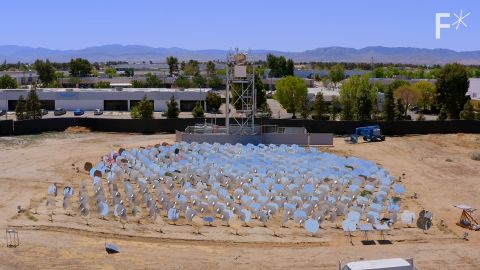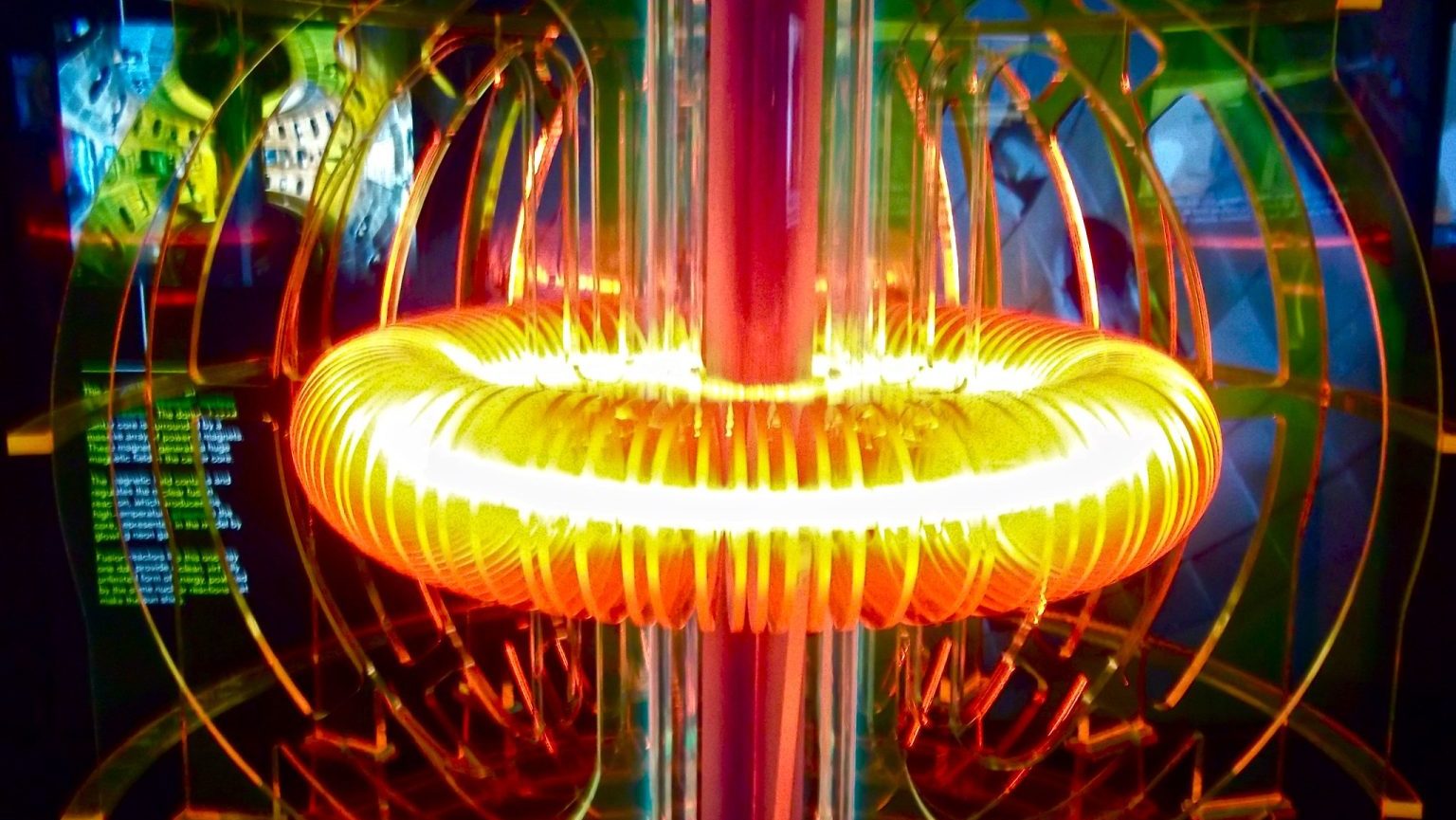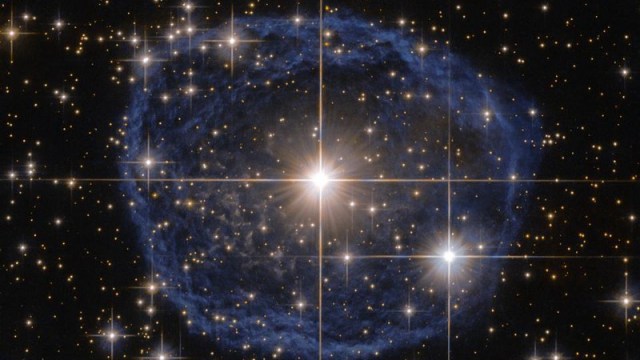Heliogen: concentrated solar power plant produces temperatures of 2700° F

Freethink
- A new advance in concentrated solar power makes temperatures of 2700° F possible from nothing but sunlight.
- The heat produced can be used to produce electricity, make clean fuels, or power industrial processes.
- Founder Bill Gross sees these plants as part of a grand design to wean the world off oil.
The need for clean, consistent, renewable energy sources has never been more pressing. Rising energy prices threaten to kick-start inflation and slow economic growth. Control of the supply of fossil fuels has caused wars before and may well cause them again. Burning fossil fuels continues to create greenhouse gas emissions, making solving the problem of climate change difficult.
While low-carbon and renewable sources of power are being used more than ever before, none of them are perfect. Solar and wind power are very clean and increasingly inexpensive but have an energy storage problem. The batteries required to store that energy require rare earth metals, which are messy to extract and increasingly in demand. Hydro power is great but can have negative impacts on the river ecosystem. Nuclear is still a tough sell.
If we’re going to solve our energy problems, we either need to find a new way to produce a lot of energy or fix the problems with the power sources we have. A renewable energy technology company backed by Bill Gates and founded by serial entrepreneur Bill Gross called Heliogen has a new approach to an existing model that may just accomplish the latter with a giant, extremely precise magnifying glass and some really hot rocks.
Concentrated solar power

In Lancaster, California, a mid-sized city in the Mojave Desert, Heliogen has built a miniature version of their planned solar refinery. While concentrated solar power is nothing new — it has been operating commercially since the 1960s and is said to have been used by Archimedes to build a heat ray to burn the Roman fleet — this plant improves on the concept with stunning results.
Essentially a lot of mirrors arranged in a circle reflecting sunlight at an elevated target, concentrated solar power uses the energy in the sun’s light to heat that target, which could be water, molten salt, or even something solid, to very high temperatures. (When this heat is used for something other than producing electricity, it is called concentrated solar thermal energy.)
Heliogen’s current test refinery has 400 mirrors, known as heliostats, though it is only a tenth the size of what the company is proposing. Even with this reduced number of mirrors, the refinery has produced eye-popping results. Its operation has produced temperatures as high as 1500° C (2732° F). For comparison, most existing, full-sized concentrated solar power plants are able to produce temperatures in the 400° to 500° C range.
Heliogen’s advance is made possible by state of the art software. Using AI and a series of cameras, the heliostats are kept on target as much as possible (currently to a twentieth of a degree) through micro-adjustments to their position throughout the day. By keeping the mirrors on target, the greatest amount of sunlight possible is focused on the target, creating more heat than was previously possible.
Concentrated solar power isn’t just for electricity
It’s important to remember that this is technically a solar thermal system. Unlike solar panels, this project does not use the photovoltaic effect to turn sunlight directly into electricity. This project is about generating heat. This heat can then be used to produce electricity — and the high temperatures involved mean it can do so very efficiently — but it has applications beyond that as well.
Many industries use intense heat in their manufacturing processes, like smelting or cement making, and they often burn fuels to create those high temperatures. Heliogen’s refinery is able to produce similar temperatures without burning fuels and could provide the heat for these industries in the future. Additionally, the heat produced is high enough to make hydrogen fuel via electrolysis.
As Gross explained to CNN, “If you can make hydrogen that’s green, that’s a game-changer. Long term, we want to be the green hydrogen company.”
If not used immediately, the heat energy can also be stored in plain old rocks, which can stay hot for days or even up to a week in a properly insulated storage unit. Their energy can then be called upon when needed or possibly even shipped to a location in need of heat. Compared to the difficulties of storing electricity produced from solar, this is child’s play.
How can concentrated solar be applied at scale?
Gross hopes to improve the process by reaching the same results with increasingly smaller heliostats. His are already smaller than usual, which would allow them to be mass produced more cheaply than they are today. The hope is that this, along with other refinements to the system, would help lower the cost of energy produced by concentrated solar until it is cheaper than fossil fuel energy.
Currently, energy from concentrated solar power is more expensive than burning fossil fuels but only slightly. Also, compared to large arrays of solar panels, solar refineries are more expensive to build and operate. But costs are expected to decrease, in part because they are much better at energy storage than traditional solar, as discussed earlier. Furthermore, large scale concentrated solar power operations already exist in Spain, the Middle East, and the Southwestern U.S.
Concentrated solar power could radically change manufacturing
Gross’s grand vision is to build many refineries all over the world using their heat to power industrial processes. The electricity produced by other refineries would create vast quantities of cheap “HelioFuels,” starting with hydrogen. Sincehydrogen fuel cells are extremely efficient and can run everything from submarines to laptops, this would be a huge step toward cleaning up the energy supply.
Similar ideas exist and have been used elsewhere to cleanly produce jet fuel, another industrial process that normally requires burning fossil fuels in order to create high temperatures.
The reduction in carbon emissions due to widespread use of concentrated solar could be substantial. Concrete manufacturing alone is responsible for 8 to 10 percent of all global emissions. Nearly 40 percent of those emissions are caused by burning the fossil fuels needed to create heat for the manufacturing process. Quick mental math suggests that if concentrated solar power replaced fossil fuel burning for heat in concrete production alone, global carbon emissions would fall by as much as four percent. For comparison, that is roughly equal to the share of carbon emissions created by France, Italy, the United Kingdom, and Brazil combined.





